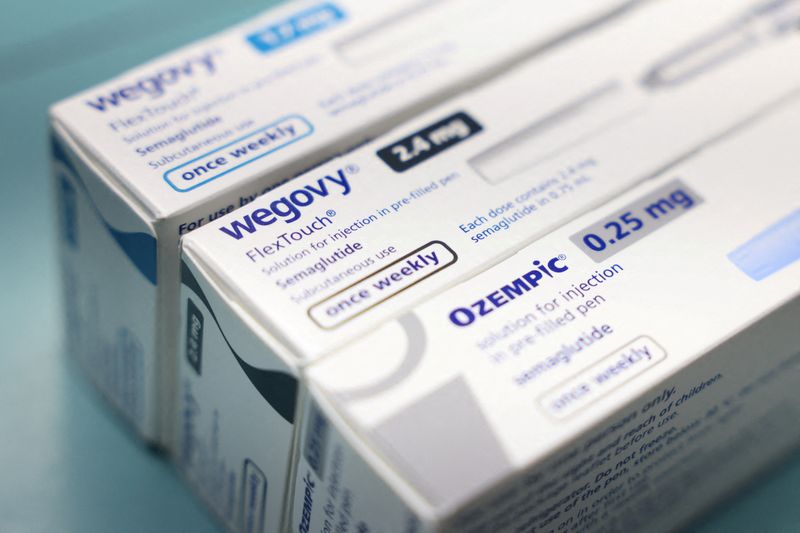Investing.com — The landscape of GLP-1 drugs, widely recognized for their efficacy in weight loss and diabetes management, is poised for a potential transformation by 2025, according to analysts at Barclays (LON:).
These drugs, exemplified by such widely recognized brands as Novo Nordisk’s Ozempic and Wegovy, are gaining prominence not only for their therapeutic benefits, but also for their broader implications across industries from healthcare to consumer goods.
Barclays says that while current penetration of GLP-1 drugs in the US remains low, several catalysts could dramatically reshape this narrative.
Demand for these drugs continues to outpace supply, but significant developments in manufacturing and innovation are ahead.
One of the most critical factors identified is the expected launch of a next-generation anti-obesity drug, CagriSema, by Novo Nordisk (NYSE:).
This drug, a combination of semaglutide and cagrilintide, targets an ambitious weight loss goal of 25% body weight – a marked improvement over the current generation of GLP-1 drugs, which deliver a weight loss of 15-20%.
Barclays estimates CagriSema’s potential peak sales at $49 billion in 2038, significantly exceeding current projections for existing GLP-1 drugs such as Wegovy.
Supply constraints are an ongoing problem in the GLP-1 market. However, Barclays points to recent developments, such as Novo Nordisk’s acquisition of three production facilities through the Catalent (NYSE:) deal, which could increase production capacity substantially from 2026. This expansion is expected to alleviate supply shortages and increase prescription volumes.
Uncertainties remain in the regulatory field. For example, the political climate in the US, especially under a potential Trump administration, could pose challenges, including drug price reforms or restrictions on the use of GLP-1.
While the likelihood of immediate regulatory overhaul is slim, such possibilities act as an overhang on the market.
Barclays underlines the far-reaching impact of GLP-1 medicines across industries. In consumer goods, companies are increasingly aligning their portfolios with changing consumer behavior, driven by the use of GLP-1.
For example, Nestlé has launched a dedicated GLP-1 Nutrition Support Platform, which offers products designed to supplement the nutritional needs of individuals taking these medications.
In the same way, Danone (EPA:) is well positioned to benefit, given its emphasis on gut health and its high-protein offering, which aligns with the nutritional priorities of GLP-1 users.
Retailers are also experiencing shifts. For example, Walmart (NYSE:) has seen notable revenue growth contributions from GLP-1 drug transactions, as packaged food companies begin to adapt their strategies to meet growing demand for portion-controlled, high-protein and high-fiber options.
In the restaurant industry, the story is more nuanced. Quick-service restaurants may be less directly impacted due to their lower-income consumer base, who are less likely to use GLP-1 medications.
However, casual dining could be more vulnerable given higher income customers who could prioritize health-conscious dining options affected by these medications.
Barclays predicts that the wider adoption of GLP-1 drugs could be driven not only by their weight loss benefits, but also by emerging data supporting their role in treating other conditions, such as Alzheimer’s disease and cardiovascular problems.
Trials such as Novo Nordisk’s EVOKE, which will deliver results by the end of 2025, could significantly expand the therapeutic reach of these drugs.
However, the success of GLP-1 drugs in transforming industries depends on overcoming challenges of affordability, accessibility and public perception. As production scale and competition within the drug class increase, prices may stabilize, creating opportunities for broader adoption.


